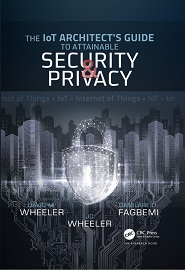
English | 2020 | ISBN: 978-0815368168 | 330 Pages | PDF, EPUB | 26 MB
This book describes how to architect and design Internet of Things (loT) solutions that provide end-to-end security and privacy at scale. It is unique in its detailed coverage of threat analysis, protocol analysis, secure design principles, intelligent loT’s impact on privacy, and the effect of usability on security. The book also unveils the impact of digital currency and the dark web on the loT-security economy. It’s both informative and entertaining.
We wrote this book not only to be a valuable security and IoT architectural resource for you but also to be an enjoyable read. With that in mind, we’ve added personal experiences, scenarios, and examples designed to draw you in and keep you engaged.
Who Will Benefit Most from This Book?
If you have a vested interest in IoT systems that preserve security and uphold privacy, this book is for you. The primary beneficiaries are IoT architects (security, system, software, or solution architects), and IoT strategic marketing. Executive managers and policy makers will also benefit from its insights.
Topics at a Glance
- The fundamental components of an IoT system.
- The architecture of IoT systems, how they differ from other client-server and cloudbased systems, and why are they architected the way they are.
- The security-mindset and secure design principles required to build secure systems and communicate effectively with customers, architects, and designers.
- The motivation and methods of cybercriminals.
- The IoT Security Economy, dark web, dark money, and digital currency.
- IoT attack vectors–how IoT systems are attacked.
- How to perform a threat analysis and construct countermeasures to protect a system, whether that is an IoT, cloud, or some other system–including detailed examples.
- A broad survey of common and not-so-common IoT communications protocols, and the roles of wired and wireless communications in IoT system.
- How to perform a protocol analysis–analyzing a protocol for security and finding security vulnerabilities in protocols, including a detailed example.
- Artificial Intelligence and Digital Privacy–the privacy impacts of combining AI and IoT; featuring scenarios for an autonomous vehicle ecosystem and smart refrigerator.
- Digital privacy laws and regulations and how they impact IoT architectures.
- A Privacy Playbook to mitigate unnecessary exposure of personal data.
- Designing Usable IoT Security–principles for building user-friendly security controls into IoT systems.
- The future evolution of the Internet of Things and AI, the impact on our lives, the security consequences we must prevent . . . starting now, and the responsibilities we all share.
Resolve the captcha to access the links!